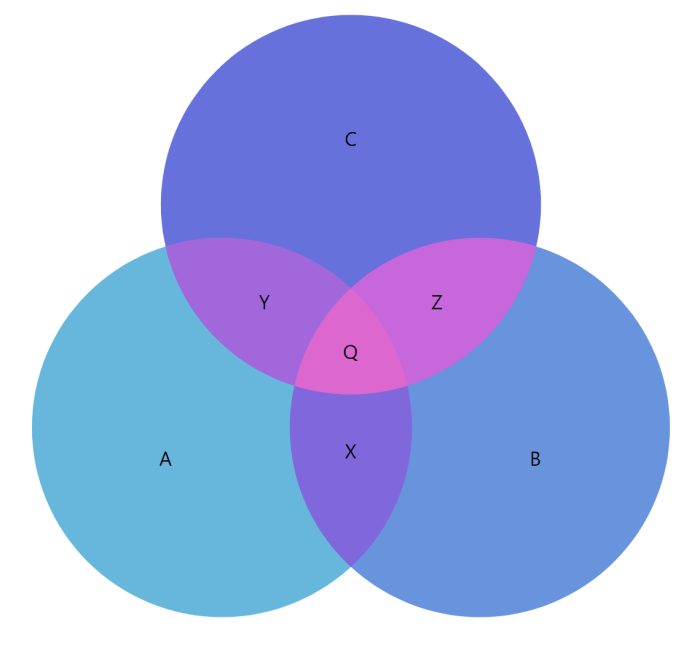Unveiling the intriguing parallels between trees and human anatomy, the tree and body parts venn diagram invites us on an enlightening journey into the realms of biology, symbolism, and our profound connection with nature.
Through meticulous analysis and evocative prose, this discourse delves into the structural similarities, metaphorical connections, environmental and health benefits, and cultural significance that intertwine these two seemingly disparate entities.
Parts of a Tree and the Human Body
Trees and the human body share remarkable structural and functional similarities. Understanding these parallels deepens our appreciation for the interconnectedness of living organisms.
Structural Similarities, Tree and body parts venn diagram
- Tree Trunks and Human Legs:Both provide structural support and stability, enabling upright posture and movement.
- Tree Branches and Human Arms:Extend outward to reach for sunlight and resources, allowing for mobility and interaction with the environment.
- Tree Leaves and Human Skin:Serve as protective barriers, regulate temperature, and facilitate gas exchange.
Functional Parallels
- Photosynthesis and Respiration:Trees convert sunlight into energy through photosynthesis, while humans inhale oxygen and exhale carbon dioxide through respiration.
- Water Transport and Circulation:Trees absorb water through their roots and transport it through their trunks and branches, similar to how blood circulates through the human body.
- Growth and Development:Both trees and humans undergo growth and development stages, responding to environmental cues and adapting to changing conditions.
Metaphorical Connections
Trees have long been used as metaphors to represent human life and experiences. Their symbolism extends beyond physical similarities to encompass emotional, psychological, and spiritual dimensions.
Tree as a Symbol of Life
- Roots:Groundedness, stability, and connection to ancestors.
- Trunk:Strength, resilience, and the journey of life.
- Branches:Growth, exploration, and reaching for potential.
- Leaves:Transitory nature of life and the cycle of renewal.
Tree Imagery in Literature and Art
Tree imagery is prevalent in literature and art, conveying emotions and themes such as:
- Growth and Transformation:Trees represent the potential for personal and spiritual growth.
- Strength and Resilience:Their ability to withstand adversity inspires resilience and determination.
- Connection and Community:Trees form interconnected networks, symbolizing the importance of relationships.
Environmental and Health Benefits

Trees provide numerous environmental and health benefits, making them essential for human well-being and planetary health.
Oxygen Production and Air Filtration
Trees absorb carbon dioxide and release oxygen through photosynthesis, purifying the air we breathe.
Physical and Mental Well-being
- Reduced Stress and Anxiety:Spending time in nature has been shown to reduce stress levels and improve mental well-being.
- Improved Cognitive Function:Exposure to trees can enhance memory, attention, and creativity.
- Physical Activity:Trees provide opportunities for physical activity, such as walking, running, and playing.
Environmental Sustainability
Trees play a crucial role in maintaining biodiversity, regulating water cycles, and mitigating climate change.
Cultural and Historical Significance: Tree And Body Parts Venn Diagram

Trees have been deeply intertwined with human cultures and societies throughout history.
Historical Uses
- Food:Trees provide fruits, nuts, and other edible products.
- Shelter:Trees have been used to build homes, temples, and other structures.
- Medicine:Many trees have medicinal properties and have been used for centuries to treat various ailments.
Cultural Symbolism and Mythology
Trees have been revered in many cultures and associated with:
- Fertility and Growth:In some cultures, trees are seen as symbols of fertility and abundance.
- Wisdom and Knowledge:Trees are often depicted as sources of wisdom and enlightenment.
- Spiritual Connection:Trees have been used for religious rituals and spiritual practices in many cultures.
Interactive Table: Tree and Human Body Parts Comparison
| Tree Part | Human Body Part | Function | Significance |
|---|---|---|---|
| Trunk | Legs | Structural support and mobility | Upright posture and movement |
| Branches | Arms | Reaching for resources and interaction | Mobility and dexterity |
| Leaves | Skin | Protection, temperature regulation, gas exchange | Barrier, insulation, and sensory perception |
| Roots | Circulatory System | Absorption and transport of nutrients | Oxygen and nutrient delivery |
| Photosynthesis | Respiration | Energy production and oxygen release | Energy production and carbon dioxide removal |
FAQ Insights
How do tree trunks and human legs share structural similarities?
Both tree trunks and human legs provide structural support, facilitating upright posture and mobility.
What metaphorical significance do trees hold in literature and art?
Trees are often employed as symbols of life, growth, strength, and resilience, evoking powerful emotions and conveying profound themes.